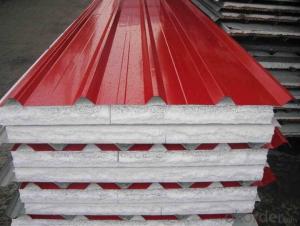Reinforced steel is more than just a material; it’s the backbone of modern infrastructure. It’s the silent hero that supports our buildings, bridges, and roads, allowing us to live, work, and travel with ease. But what exactly is reinforced steel, and why is it so crucial to our daily lives? Let’s dive into the world of reinforced steel and explore its significance in our world.
The Essence of Reinforced Steel
Reinforced steel, often referred to as rebar, is a type of steel bar that’s been processed to enhance its durability and strength. It’s made by passing regular steel through a series of rollers that shape it into a ribbed pattern. This pattern increases the surface area of the steel, allowing it to bond better with concrete. The result is a composite material that’s incredibly strong and resistant to various environmental factors.
Imagine a world without reinforced steel. Our buildings would crumble under their own weight, bridges would be a thing of the past, and our roads would be a mess of potholes and cracks. It’s a scary thought, isn’t it? But luckily, reinforced steel is here to save the day.
The History of Reinforced Steel
The story of reinforced steel dates back to the late 19th century when it was first used in construction projects. It was a game-changer, allowing engineers to create structures that were previously thought impossible. Over the years, the use of reinforced steel has only grown, and today it’s a staple in the construction industry.
But it’s not just about the past; reinforced steel is also shaping our future. With advancements in technology and materials science, we’re seeing new and innovative ways to use reinforced steel in construction. From earthquake-resistant buildings to self-healing concrete, the possibilities are endless.
The Role of Reinforced Steel in Modern Infrastructure
Reinforced steel plays a vital role in the construction of modern infrastructure. It’s used in a variety of applications, from residential buildings to large-scale projects like dams and skyscrapers. Its versatility and strength make it an ideal material for these projects.
One of the key benefits of reinforced steel is its ability to withstand extreme loads. Whether it’s the weight of a building or the pressure of a dam, reinforced steel can handle it. It’s also resistant to corrosion, which means it can last for decades without needing maintenance or replacement.
The Emotional Connection to Reinforced Steel
While reinforced steel may not seem like an emotional topic, it’s actually deeply connected to our lives. It’s the foundation of our homes, schools, and workplaces. It’s the reason we can cross bridges safely and drive on smooth roads. It’s the material that makes our world go round.
So next time you’re walking down the street or driving on the highway, take a moment to appreciate the reinforced steel that’s quietly supporting you. It may not be glamorous, but it’s an essential part of our lives.
The Future of Reinforced Steel
As we look to the future, reinforced steel continues to be a key ingredient in modern infrastructure. With a growing global population and increasing urbanization, the demand for strong, durable materials is only going to rise. Reinforced steel is poised to meet this demand, thanks to its strength, versatility, and adaptability.
Innovations in reinforced steel are also on the horizon. We’re seeing the development of new alloys and manufacturing techniques that will make reinforced steel even stronger and more efficient. This will allow us to build taller buildings, longer bridges, and more resilient infrastructure.
Conclusion
Reinforced steel is more than just a material; it’s the lifeblood of modern infrastructure. It’s the unsung hero that keeps our world running smoothly. So the next time you marvel at the engineering feats of our time, remember the humble reinforced steel that makes it all possible. It’s a testament to human ingenuity and our ability to create structures that stand the test of time.

